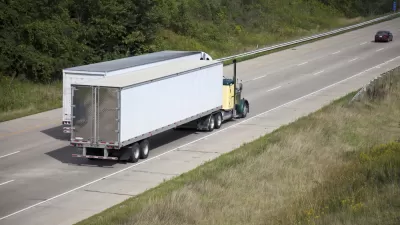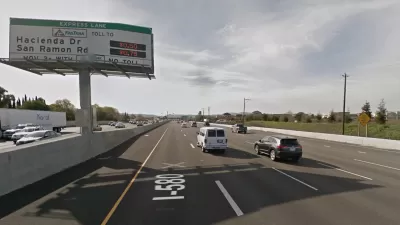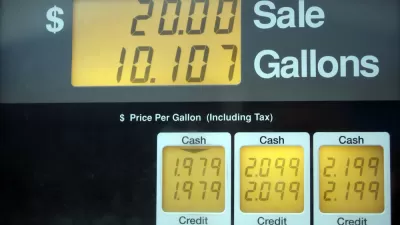The Congressional Budget Office takes aim at transportation funding and spending. It notes with alarm a $143 billion federal subsidy since 2008 and recommends charging motorists directly via vehicle-miles-traveled fees and road tolls.
With the passage of the five-year, $305 billion transportation reauthorization bill known as the FAST Act last December federal highway subsidies have entered a new era. "Since 2008, lawmakers have transferred about $143 billion from other sources to maintain a positive balance in the trust fund," states the summary to the 40-page, Feb. 11 CBO report, "Approaches to Making Federal Highway Spending More Productive" [PDF].
The other alarming consideration noted by report authors Chad Shirley and Nathan Musick is that "adjusted for changes in construction costs, total federal spending on highways buys less now than at any time since the early 1990s."
The report also looks at how the funds are spent, observing that "(s)pending on highways does not correspond very well with how the roads are used and valued."
For example, even though highway travel is more concentrated on Interstates and in urban areas, and urban roads are typically in poorer condition than rural ones, the federal government and state governments typically have spent more per mile of travel for major repairs on rural roads.
The report offers "(t)hree approaches that the Congress should consider would make highway funding and spending more productive:"
- "Have the federal government—or allow states or private businesses to—charge drivers directly for their use of roads more often, including charging them more for using roads when traffic is more congested;
- "Allocate funds to states on the basis of the benefits and costs of specific programs and projects; and
- "Link spending more closely to performance measures—such as ones for traffic congestion or road quality—by providing additional funds to states that meet standards or penalizing states that do not."
Chapter Two delves into alternative funding approaches. It makes three recommendations to policy makers so that they "could incorporate more direct pricing of the use of roads":
- "Implementing VMT charges;
- "Facilitating more congestion pricing; and
- "Allowing tolling on additional existing Interstates."
On that last note, the FAST Act made some changes—good for states willing and ready to add tolls to interstates, not good for Missouri, North Carolina and Virginia—the three states that had prior authorization to add tolls. They now "will have one year to move ahead with plans to add tolls or lose their slots to other states ready to add tolls to their highways," wrote Ron Nixon And Danielle Ivory for The New York Times. "The new states then would have three years to complete projects or be removed from the pilot."
VMT fees are clearly making progress on the state level. Using the term "road usage charge," they are now applied a limited program (OReGO) in Oregon that began last July, and California will begin a pilot program this summer.
The FAST Act provide $95 million for states "to test gas tax alternatives," including VMT Fees.
Hat tip to L.A. Transportation Headlines.
FULL STORY: CBO Report: Approaches to Making Federal Highway Spending More Productive – Feb 11

Planetizen Federal Action Tracker
A weekly monitor of how Trump’s orders and actions are impacting planners and planning in America.

Maui's Vacation Rental Debate Turns Ugly
Verbal attacks, misinformation campaigns and fistfights plague a high-stakes debate to convert thousands of vacation rentals into long-term housing.

Restaurant Patios Were a Pandemic Win — Why Were They so Hard to Keep?
Social distancing requirements and changes in travel patterns prompted cities to pilot new uses for street and sidewalk space. Then it got complicated.

In California Battle of Housing vs. Environment, Housing Just Won
A new state law significantly limits the power of CEQA, an environmental review law that served as a powerful tool for blocking new development.

Boulder Eliminates Parking Minimums Citywide
Officials estimate the cost of building a single underground parking space at up to $100,000.

Orange County, Florida Adopts Largest US “Sprawl Repair” Code
The ‘Orange Code’ seeks to rectify decades of sprawl-inducing, car-oriented development.
Urban Design for Planners 1: Software Tools
This six-course series explores essential urban design concepts using open source software and equips planners with the tools they need to participate fully in the urban design process.
Planning for Universal Design
Learn the tools for implementing Universal Design in planning regulations.
Heyer Gruel & Associates PA
JM Goldson LLC
Custer County Colorado
City of Camden Redevelopment Agency
City of Astoria
Transportation Research & Education Center (TREC) at Portland State University
Jefferson Parish Government
Camden Redevelopment Agency
City of Claremont





























